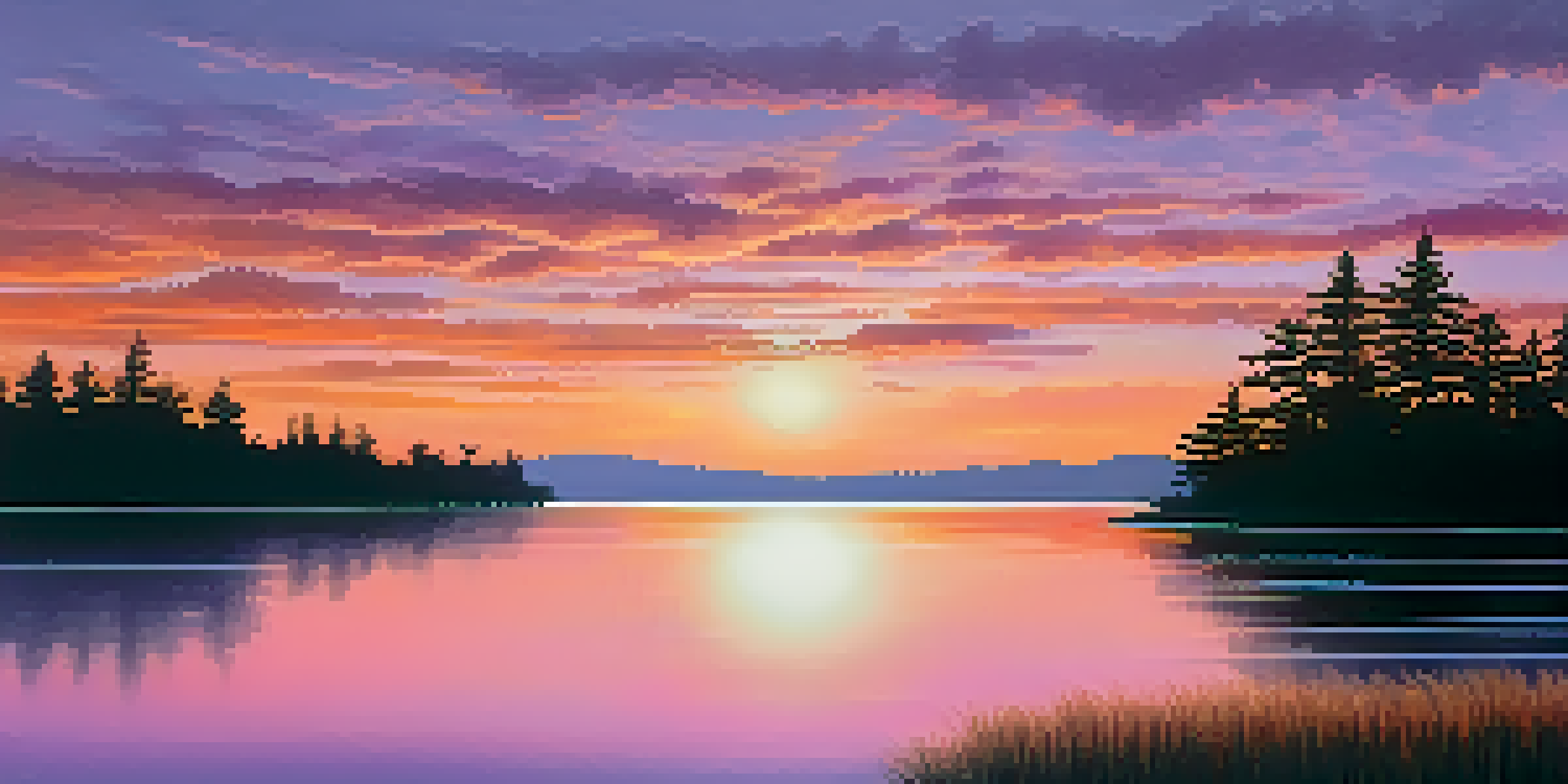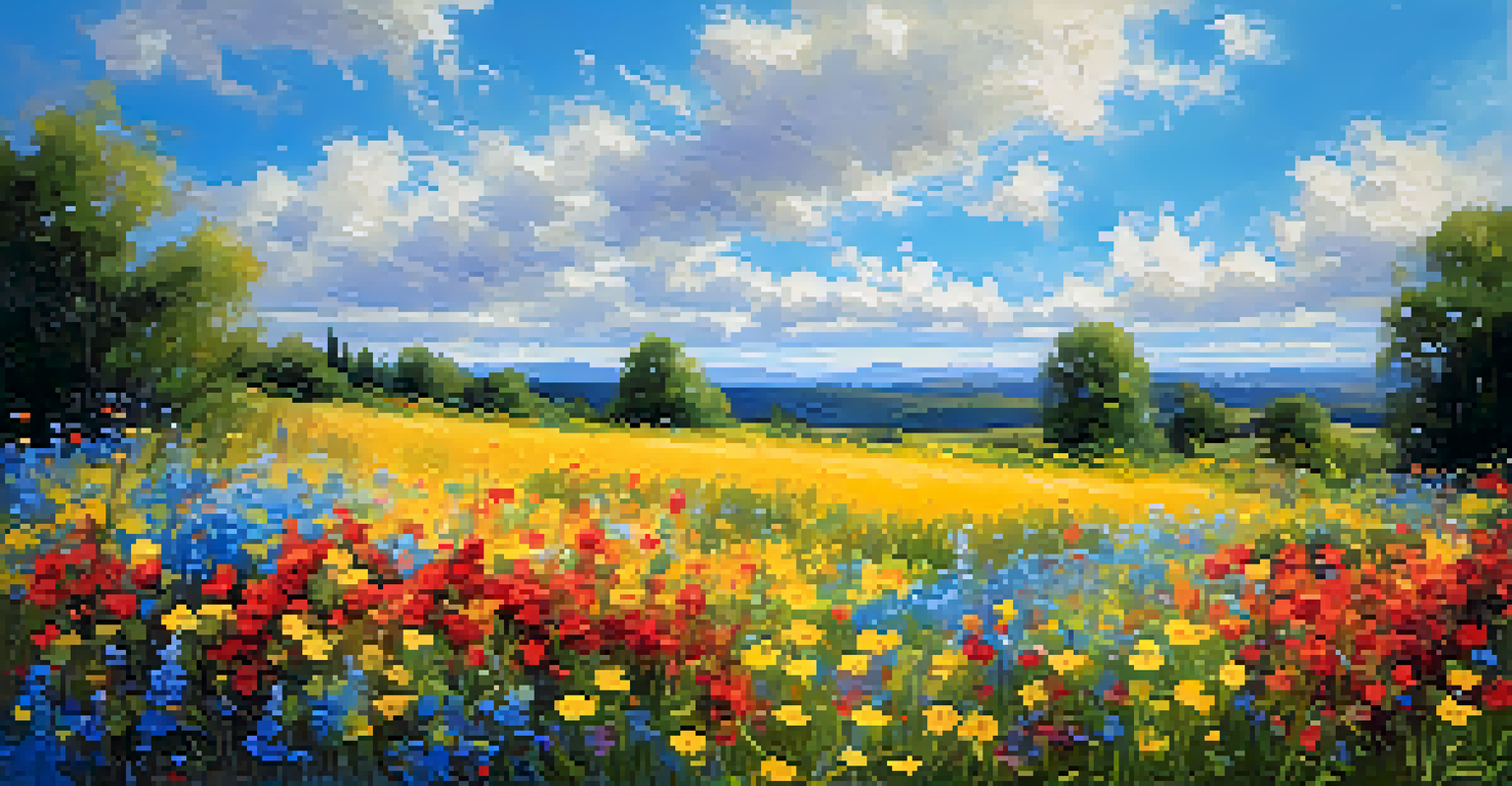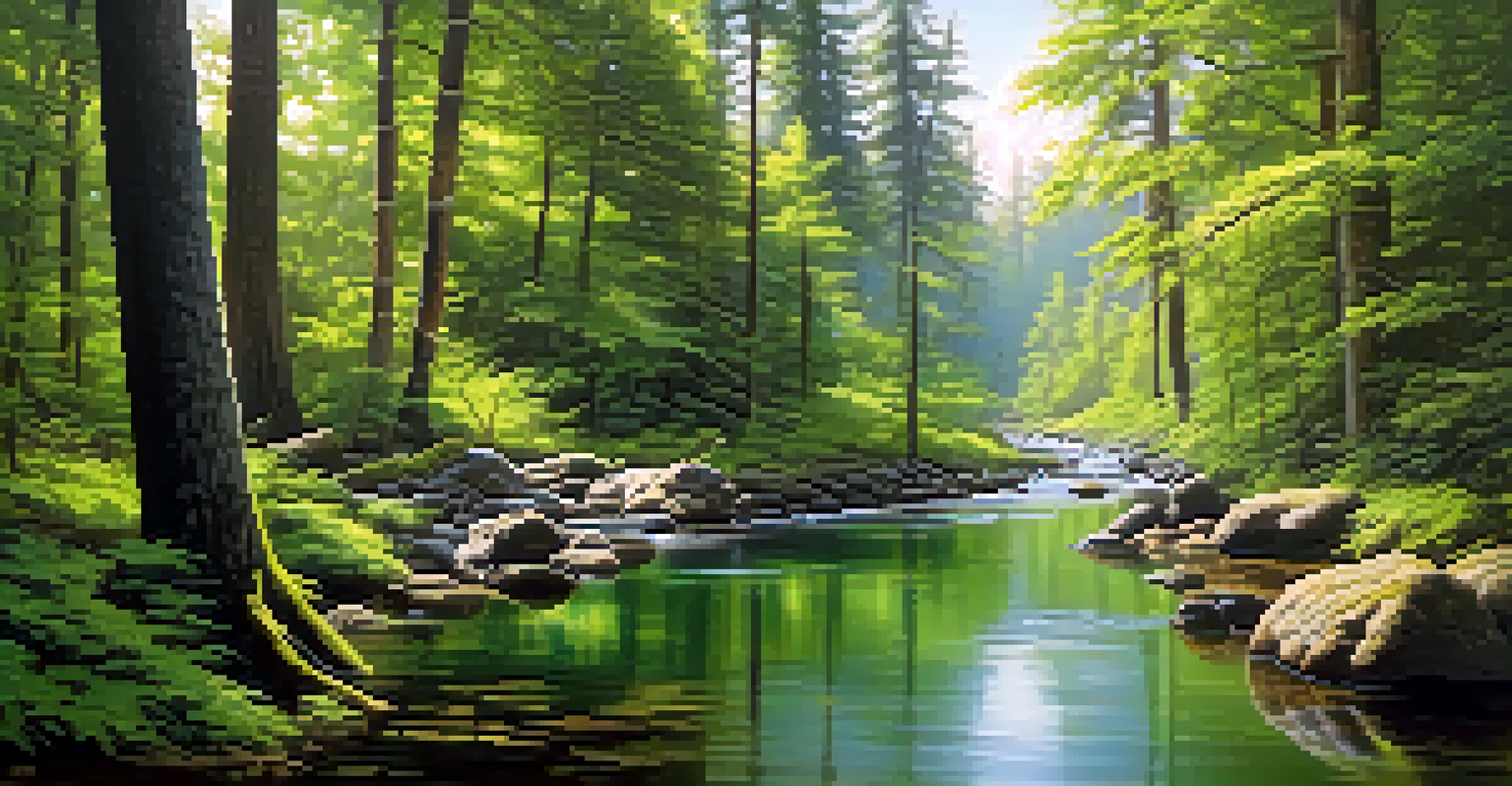Visualizing Melody: How Music Inspires Landscape Paintings

The Harmony of Sound and Sight: An Introduction
Music and visual art may seem like distinct worlds, but they often share a profound connection. Just as a melody can evoke emotions, so can a landscape painting transport us to different realms. This article delves into how music inspires artists to create stunning landscapes that resonate with our senses.
Music is the shorthand of emotion.
Imagine listening to a soft piano piece while gazing at a serene sunset painting. The colors blend harmoniously, much like the notes of the music. Both art forms have the power to evoke feelings of tranquility, nostalgia, or even exhilaration, connecting the observer to the artist's intent.
By exploring how melodies influence the brushstrokes of painters, we can better appreciate the symbiotic relationship between these two artistic expressions. Let's embark on this journey of discovery and see how sound translates into visual beauty.
The Emotional Palette: How Music Evokes Feelings
Just as a song can stir deep emotions, landscape paintings can reflect the artist's feelings in their work. Certain musical genres, like classical or jazz, often inspire artists to capture the essence of a moment or mood in their landscapes. The emotional undertones of music can guide the choice of colors, textures, and forms in a painting.

For example, a lively upbeat tune might inspire vibrant colors and dynamic shapes, while a melancholic ballad could lead to more subdued tones and softer lines. This emotional translation creates a visual representation of what the artist hears, inviting viewers to experience the same feelings.
Music and Art Share Deep Connections
Both music and landscape painting evoke emotions and can inspire one another, enriching the artistic experience.
By understanding how music influences the emotional palette of artists, we can appreciate landscapes as more than just scenery. Instead, they become windows into the artist's soul, shaped by the melodies that moved them.
The Influence of Nature: A Song of the Earth
Nature often serves as both a muse and a soundtrack for artists. The sounds of the environment—rustling leaves, flowing water, and birdsong—can inspire a landscape that feels alive. Artists who immerse themselves in nature may find that the beauty of their surroundings resonates with musical themes.
Art is the most beautiful of all lies.
For instance, a painter might listen to the gentle sounds of a forest while capturing a tranquil woodland scene on canvas. The rhythm of the wind through the trees can influence their brushwork, creating a sense of movement that mirrors the music of nature itself.
This interplay between natural soundscapes and visual representation showcases how the world around us can inspire art. Nature becomes a symphony, and the landscape painting reflects the harmony of its elements.
Famous Artists Inspired by Music
Throughout history, many renowned artists have drawn inspiration from music. For instance, the Impressionist painter Claude Monet was known to host musical gatherings that fueled his creativity. The vibrant colors and loose brushstrokes in his landscapes reflect the lively nature of the music he enjoyed.
Similarly, Vincent van Gogh often painted while listening to the sounds of his environment, letting the rhythm of the world shape his work. His swirling skies and expressive landscapes echo the emotional highs and lows of the music that inspired him.
Nature Inspires Artistic Expression
The sounds and beauty of nature often influence artists, creating a symbiotic relationship between environmental sounds and visual art.
These artists remind us that the creative process is often a collaborative effort between different forms of expression. Music becomes a vital part of their artistic journeys, enriching their landscapes with depth and emotion.
Translating Melody into Visual Language
Translating music into visual art involves a unique process where sounds become colors and emotions take shape. Artists often describe their experience of listening to music as a journey, where each note corresponds to a brushstroke or a hue on their palette. This translation requires a deep understanding of both art forms.
For example, a composer’s crescendo might inspire an artist to use bold, sweeping strokes, while a serene adagio could lead to gentle, flowing lines. The result is a landscape painting that captures the essence of the melody, inviting viewers to experience the music through a visual lens.
This creative process showcases the versatility of artistic expression, where music and painting intertwine to create something greater than the sum of their parts. Viewers are left to interpret the visual language, experiencing the melody in a new, vibrant form.
The Role of Rhythm in Landscape Composition
Just as music has rhythm, so do landscape paintings. The composition of a painting often mirrors the rhythmic patterns found in music, guiding the viewer's eye through the artwork. Artists may use repeating motifs, lines, and shapes to create a sense of flow that mimics musical phrasing.
For instance, a winding river in a landscape can act like a melody line, leading the viewer on a visual journey. The repetition of certain elements can create a harmonious balance, just as a refrain repeats in a song. This rhythmic quality adds a layer of depth to the artwork, enhancing its emotional impact.
Rhythm Enhances Visual Composition
Just as music has rhythm, landscape paintings incorporate rhythmic patterns that guide the viewer's experience and evoke emotions.
Understanding this connection between rhythm and composition helps us appreciate how landscape paintings can evoke the same feelings as a beautiful melody. They provide a visual rhythm that resonates with our emotional experiences.
Conclusion: The Lasting Connection Between Music and Art
As we've explored, the relationship between music and landscape painting is rich and multifaceted. Both art forms share the ability to evoke emotions, tell stories, and transport us to different worlds. By understanding how music inspires visual artists, we gain a deeper appreciation for the landscapes that adorn our walls.
This connection invites us to view art through a different lens, recognizing the melodies that shape the visual narratives we encounter. Just as we might listen to a favorite song, we can now look at a painting and sense the music that inspired its creation.

In essence, visualizing melody allows us to experience the beauty of both music and art in a unified way. As we continue to explore this intersection, we celebrate the creativity that flows between these two powerful forms of expression.